This post may contain affiliate links.
If you make a purchase, My Modern Met may earn an affiliate commission.
like readour disclosurefor more info.
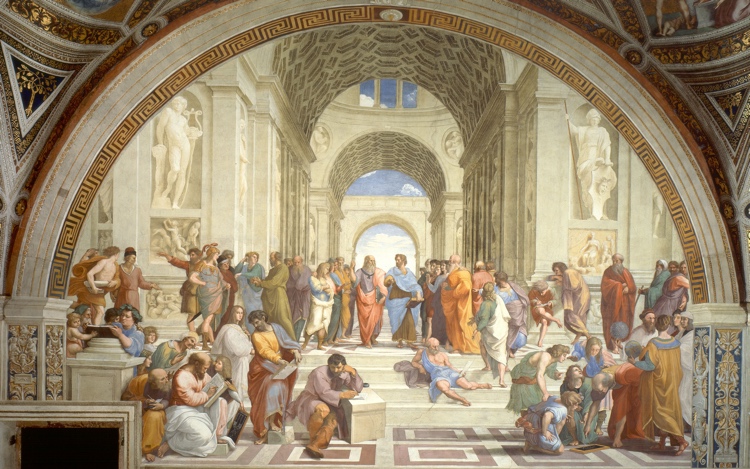
This post may contain affiliate links. If you make a purchase, My Modern Met may earn an affiliate commission. Please readour disclosurefor more info.
By his mid-20s, Raphael was already a star.
Starting in 1509 he began decorating the first of four rooms in the Papal Palace.
Collectively, these Raphael Rooms, along withMichelangelos Sistine Chapelexemplify theHigh Renaissance frescotechnique.
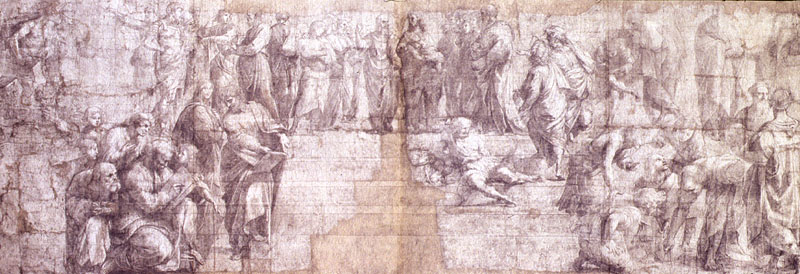
“The School of Athens” preparatory cartoon
But just what does this famous painting mean?
At the time, a commission by the pope was the apex of any artists career.
For Raphael, it was validation of an already burgeoning career.
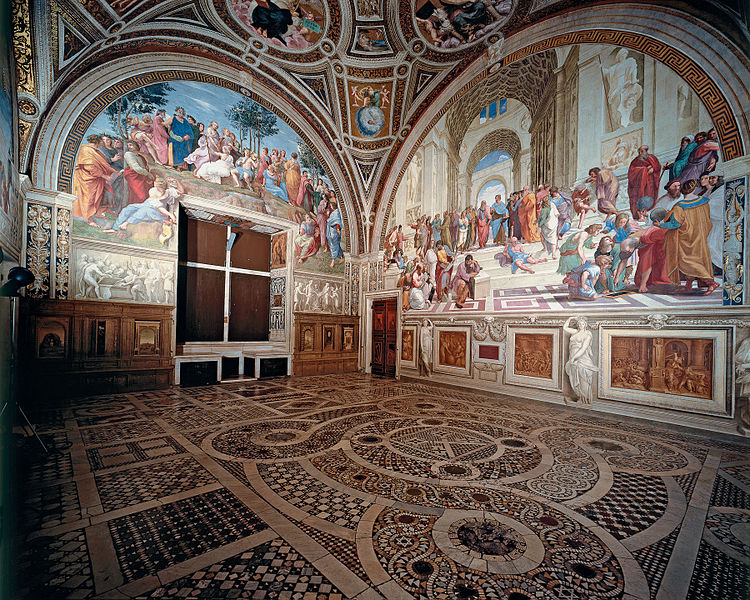
Sala della Segnatura. (Photo: 0ro1 viaWikimedia Commons,CC BY-SA 3.0orGFDL)
Theyd both grown up in Urbino and knew each other well.
Raphael rose to the challenge, creating an extensive catalog of preparatory sketches for all his frescoes.
These would later be blown up in full-scale cartoons to help transfer the design to the wet plaster.
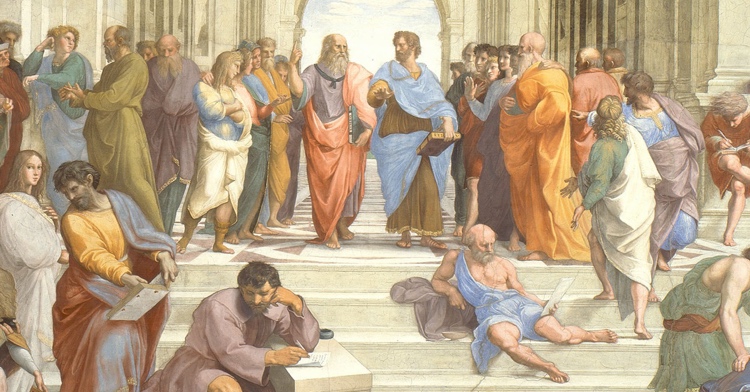
Stanza della Segnatura and the Four Branches of Knowledge
Sala della Segnatura.
In the 15th century, a tradition of decorating private libraries with portraits of great thinkers was common.
Raphael took the idea to a whole new level with massive compositions that reflected the four branches.
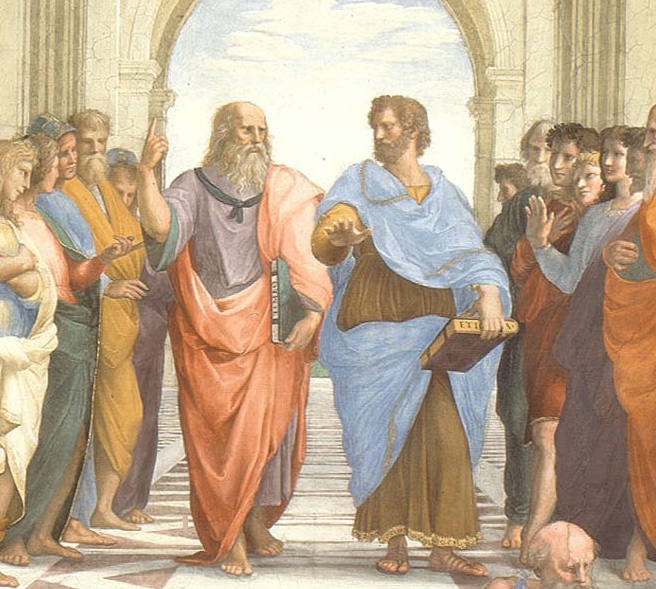
The School of Athenswas the third painting Raphael completed afterDisputa(representing theology) andParnassus(representing literature).
Its positioned facingDisputaand symbolizes philosophy, setting up a contrast between religious and lay beliefs.
Take avirtual tourof the Stanza della Segnatura via the Vatican Museums website.
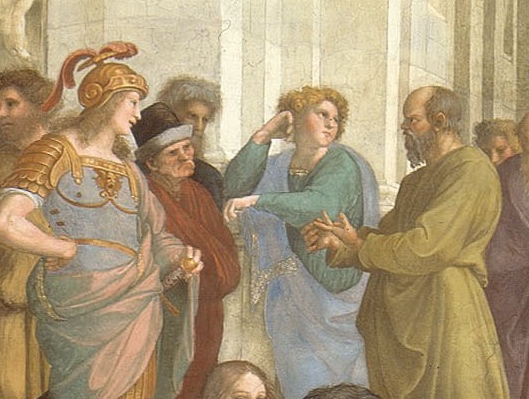
This is particularly evident by the long figure thinking in the foreground, as well soon see.
Who are the figures inThe School of Athens?
Here, we see two men who effectively represent the different schools of philosophyPlatoand Aristotle.
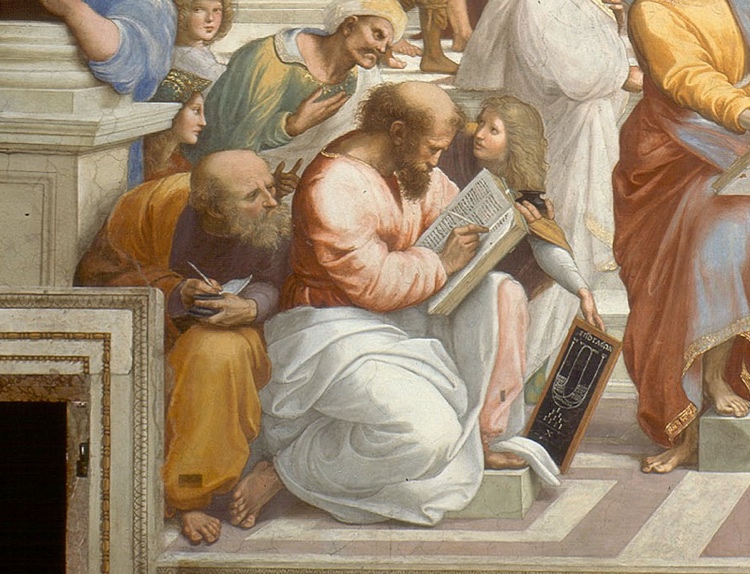
An elderly Plato stands at the left, pointing his finger to the sky.
Beside him is his student Aristotle.
In a display of superb foreshortening, Aristotle reaches his right arm directly out toward the viewer.
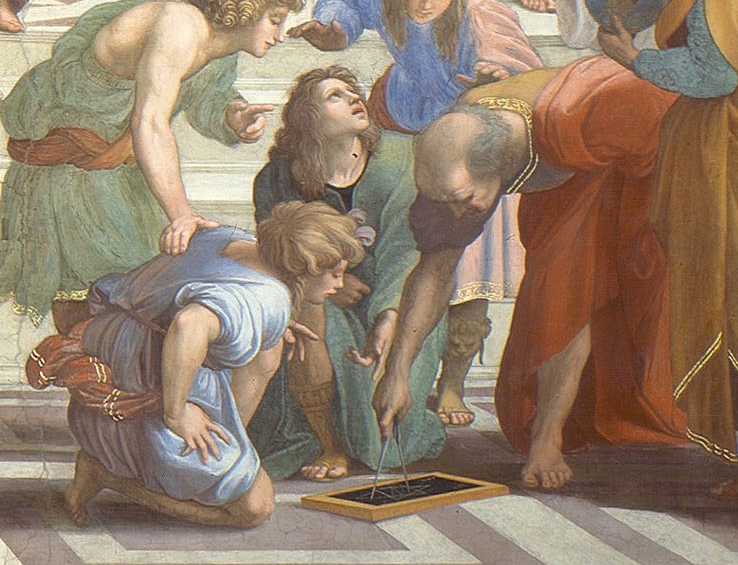
Each man holds a copy of their books in their left handTimaeusfor Plato andNicomachean Ethicsfor Aristotle.
Platos gesture toward the sky is thought to indicate his Theory of Forms.
Conversely, Aristotles hand is a visual representation of his belief that knowledge comes from experience.
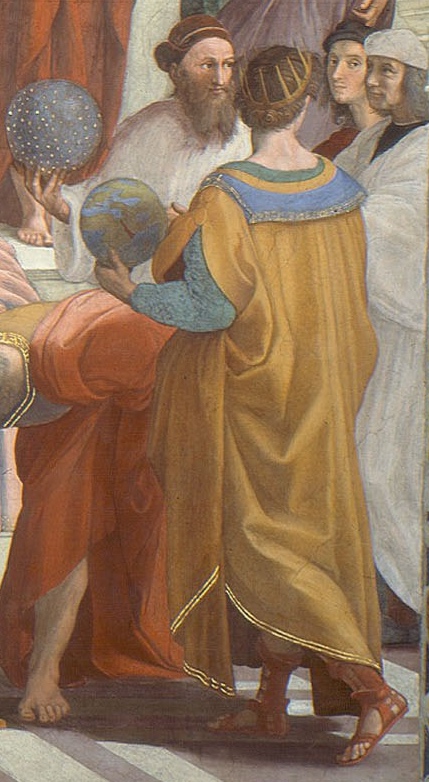
So who is everyone else?
Fortunately, there are quite a few that scholars can agree on.
Socrates
To the left of Plato, Socrates is recognizable thanks to his distinct features.
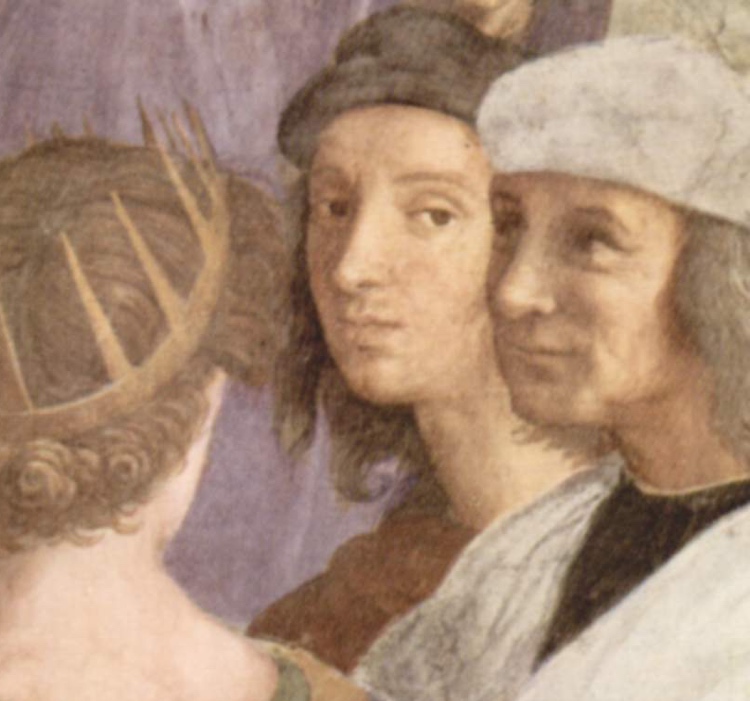
Its said that Raphael was able to use an ancient portrait bust of the philosopher as his guide.
Hes also identified by his hand gesture, as pointed out by Giorgio Vasari inLives of the Artists.
Among the crowd surrounding Socrates are his students, including the general Alcibiades and Aeschines of Sphettus.
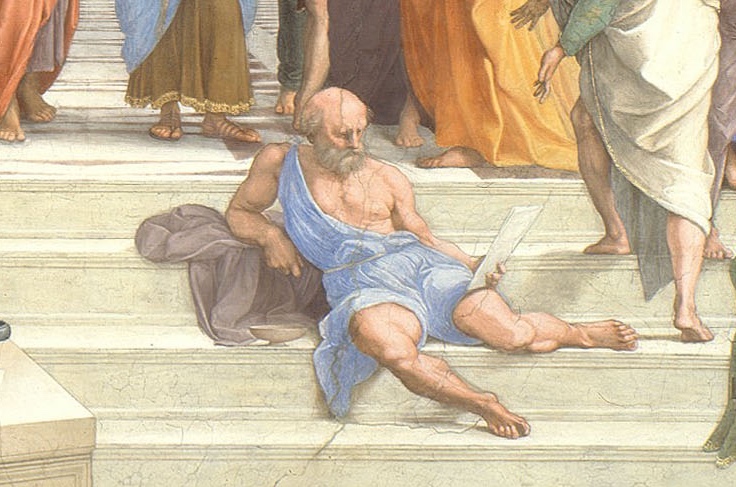
Though Pythagoras is well known for his mathematical and scientific discoveries, he also firmly believed in metempsychosis.
This philosophy states that every soul is immortal, and upon death, moves to a new physical body.
In this light, it makes sense that he would be placed on Platos side of the fresco.
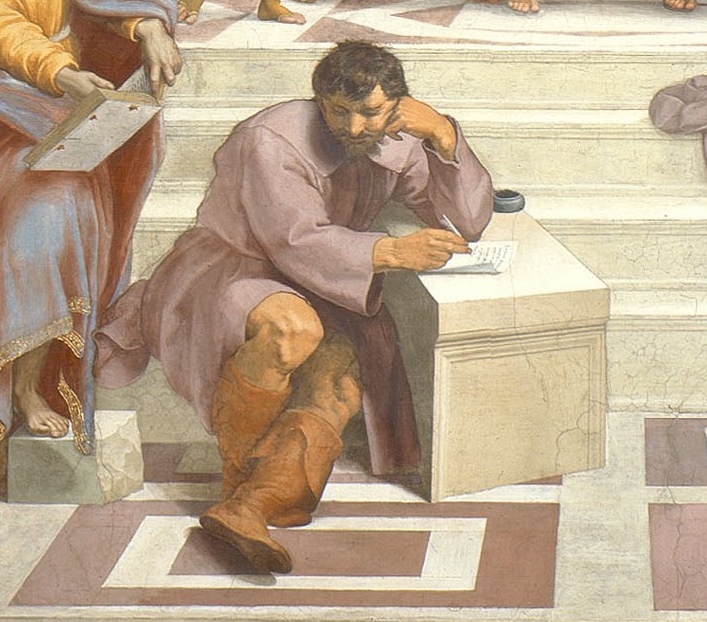
His young students eagerly make a run at grasp the lessons hes teaching them.
Experts believe that Euclid is a portrait of Raphaels friend Bramante.
Wearing a yellow robe, he holds a terrestrial globe in his hand.
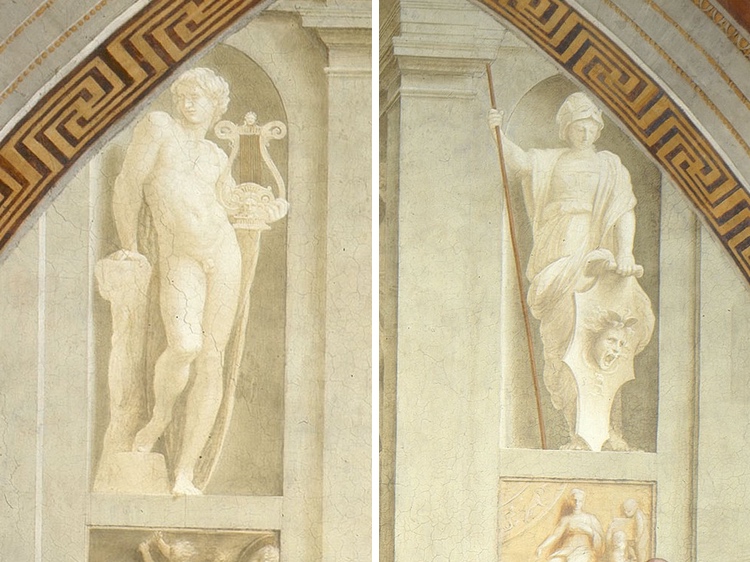
Its thought that the bearded man standing in front of him holding a celestial globe is the astronomer Zoroaster.
Diogenes
Its universally agreed that the older gentleman sprawled on the steps is Diogenes.
This figure doesnt show up in Raphaels preliminary drawings and plaster analysis shows that it was added later.
In the realm of philosophers, he is Heraclitus, a self-taught pioneer of wisdom.
On Platos right, we see Apollo, while on Aristotles left is Minerva.
Apollo, recognizable by his lyre, represents the natural philosophy side.
Though Raphaels life was shorthe died in 1520 at age 37his impact has endured over the centuries.